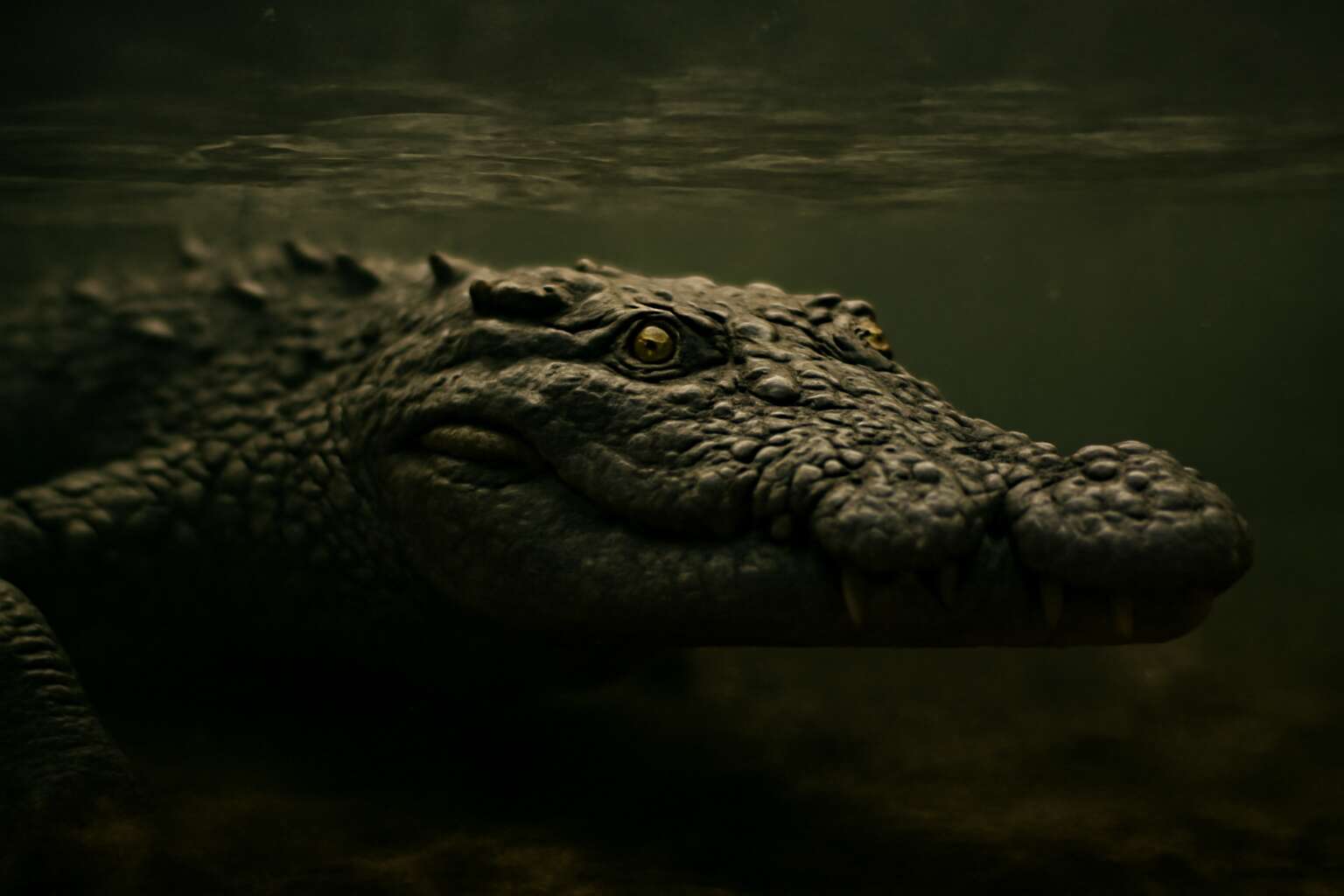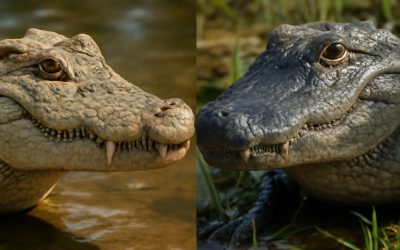Understanding Crocodile Behavior Beneath the Surface
The Natural Habitat of Crocodiles – Exploring the environments where crocodiles thrive underwater
Few sights evoke a sense of primordial awe like observing a crocodile underwater, gliding silently with a predator’s grace. These ancient reptiles are masterful ambush predators, their behaviour beneath the surface often shrouded in mystery. Interestingly, crocodiles can hold their breath underwater for over an hour, showcasing an extraordinary adaptation that allows them to stalk prey with patience and precision. Their behaviour underwater is not merely about survival; it’s a display of calculated patience and raw power.
The natural habitat of crocodiles is as diverse as it is fascinating. They thrive in a variety of aquatic environments that range from slow-moving rivers and sprawling swamps to coastal estuaries. Each habitat offers unique opportunities, with some species favouring freshwater lakes, while others are adept at navigating brackish waters. Understanding where crocodiles thrive underwater enhances our appreciation of their behaviour and ecological importance.
- Shallow rivers
- Marshlands
- Estuarine zones
- Coastal lagoons
It is precisely these environments that provide the perfect backdrop for crocodile underwater activities—an intricate ballet of stealth, patience, and dominance. Their behaviour within these habitats reveals not just survival tactics but a nuanced social order, where each ripple in the water tells a story of ancient resilience and adaptation.
Feeding Habits and Hunting Strategies – How crocodiles hunt and consume prey underground
Few sights rival the silent majesty of a crocodile underwater, its eyes barely breaking the surface as it waits with calculated patience. These formidable predators are not just lurking; they are masters of ambush, employing a blend of stealth and raw power that leaves prey utterly unprepared. Intriguingly, crocodiles can hold their breath underwater for over an hour, a feat of anatomical ingenuity that grants them the flexibility to stalk prey with unwavering focus.
Their feeding habits and hunting strategies are a testament to their evolutionary prowess. Underneath the water’s surface, a crocodile’s behaviour is a delicate ballet of patience and precision. Instead of frantic pursuit, they often employ a sit-and-wait tactic, conserving energy while waiting for the perfect moment to strike. Their keen eyesight and sensitive snout allow them to detect even the slightest ripple, signalling potential prey’s approach.
To truly understand how a crocodile underwater hunts, consider these core tactics:
- Remaining motionless for hours, blending seamlessly with the water’s murkiness
- Using their powerful tails to propel swiftly and silently when the moment is right
- Employing a lightning-fast jaws snap, often consuming prey in a single gulp
Such behaviour underscores the importance of their ecological niche, where every ripple and shadow plays a role in their survival game. The underwater realm is not merely a hunting ground but a theatre of dominance, where each calculated move cements their status as ancient predators of water’s depths.
Breathing Mechanisms While Submerged – Adaptations that allow crocodiles to stay underwater for extended periods
Few creatures command the aquatic realm with such silent authority as the crocodile underwater. These ancient predators possess extraordinary adaptations that allow them to linger submerged for astonishingly long periods—sometimes over an hour—without surfacing for air. This remarkable feat is made possible by their specialised breathing mechanisms, which are a testament to millions of years of evolutionary refinement.
At the core of their underwater endurance lies the ability to efficiently manage oxygen levels. Crocodiles have a unique cardiovascular system that enables them to divert blood flow away from non-essential organs, conserving oxygen for vital functions. Their lungs are also highly efficient, allowing for rapid oxygen absorption when they do surface. Interestingly, crocodiles can slow their heart rate to as low as four beats per minute while submerged, a process called bradycardia, which significantly extends their breath-holding capacity.
Additionally, crocodiles’ nostrils are positioned on the top of their snout, allowing them to breathe effortlessly while remaining mostly submerged. When lurking beneath the water, they often keep their bodies motionless, blending seamlessly with the murky environment. This behaviour is complemented by their specialised eyes, which feature a protective membrane called a nictitating eyelid, shielding their vision from water debris while maintaining acute eyesight. Such adaptations make the crocodile underwater an unrivalled master of stealth and patience.
Crocodile Physiology and Adaptations for Underwater Life
Eye and Nostrils Placement – Advantages of crocodile eye and nostril positioning underwater
When it comes to crocodile underwater adaptations, their eye and nostril placement is nothing short of remarkable. These creatures have evolved to maximise their survival in aquatic environments, with eyes positioned high on their head. This strategic placement allows crocodiles to peer above the waterline while the rest of their body remains submerged, offering a stealthy advantage when stalking prey or avoiding detection. Their nostrils, located on the top of their snout, function similarly, enabling them to breathe effortlessly without surfacing completely. This combination of eye and nostril positioning grants crocodile underwater a significant edge—perfect for ambush hunting where remaining unseen is crucial.
This design isn’t accidental. It’s a finely tuned adaptation that ensures crocodiles remain as undetectable as possible in their natural habitat. The ability to stay submerged for extended periods, combined with sharp eyesight and easy breathing, makes the crocodile underwater a true master of aquatic survival. Their physiological features exemplify how evolution has shaped predators into efficient, silent hunters—an achievement that continues to fascinate both scientists and conservationists alike!
Tail and Limbs – Streamlined bodies and paddle-like limbs for swimming efficiency
In the silent depths of their aquatic realm, crocodiles exhibit a remarkable blend of physiology and adaptation that underscores their status as supreme predators. Their bodies are ingeniously streamlined, reducing water resistance and enabling swift, fluid movement beneath the surface. This sleek design is complemented by paddle-like limbs, which act as natural oars, providing efficient propulsion through even the most turbulent currents. When observed in motion, the elegance of their underwater glide is a testament to millions of years of evolutionary refinement.
The tail plays an equally pivotal role. Broad and muscular, it functions as a powerful rudder, steering the crocodile underwater with precision and control. Such physiological features are not accidental but meticulously crafted by nature to enhance their hunting prowess. The crocodile underwater is a master of stealth and speed, capable of sudden bursts of acceleration that catch prey unawares. Their limbs, though seemingly simple, are a marvel of biomechanical optimisation—designed for swift, silent movement in a world where patience is as vital as power.
Respiration and Oxygen Storage – Specialized organs and behaviors that support long dives
Among the most fascinating aspects of the crocodile underwater world is their extraordinary physiological adaptations that enable prolonged submersion. These ancient predators have evolved specialized organs that optimise oxygen management, allowing them to stay submerged for remarkable durations. Unlike many aquatic creatures, crocodiles possess a unique form of hemoglobin that binds oxygen more efficiently, ensuring vital tissues remain oxygenated during extended dives.
Furthermore, crocodiles have a highly developed cardiovascular system that prioritizes oxygen delivery to essential organs. Their heart can slow dramatically, reducing oxygen consumption and conserving energy during long periods underwater. This physiological marvel not only supports their stealthy hunting tactics but also exemplifies the intricate dance between biology and environment. Interestingly, crocodiles can also store oxygen in their muscles, a process supported by myoglobin, which acts as an oxygen reservoir, akin to how a natural tank sustains their underwater pursuits.
For their breathing mechanism, crocodiles exhibit a remarkable behavioural adaptation. They surface periodically to breathe through their nostrils, which are strategically positioned on their snout to remain above water while the rest of the body remains submerged. This allows them to remain undetected by prey and predators alike, embodying the essence of underwater stealth. The blend of specialised organs and adaptive behaviours makes the crocodile underwater a true master of aquatic survival, blending evolutionary mastery with a keen predator’s instinct.
Crocodile Underwater Behavior and Movements
Swimming Techniques – How crocodiles move gracefully underwater
When it comes to crocodile underwater behaviour, these ancient predators exhibit remarkable agility. Despite their bulky appearance, crocodiles move with surprising grace beneath the surface. Their streamlined bodies and paddle-like limbs enable smooth, efficient navigation through water. It’s fascinating to observe how they often glide silently, conserving energy while stalking prey. Their ability to remain submerged for long durations is supported by specialised respiration adaptations, allowing them to hold their breath for extended periods.
Swimming techniques are a testament to their evolutionary mastery. Crocodiles use a combination of powerful tail movements and subtle limb adjustments to manoeuvre. Their tail acts like a rudder, steering them with precision. Interestingly, crocodiles can perform a type of underwater ‘flutter kick’ that maintains their position without exhausting energy. This allows them to stay undetected, patiently waiting for the right moment to strike. Such underwater movements exemplify the perfect blend of strength and stealth, making crocodile underwater activity both efficient and awe-inspiring.
Stealth and Ambush Tactics – Using the environment for silent hunting
Crocodile underwater behaviour reveals a masterclass in stealth and precision. These ancient predators excel at using their environment to remain virtually invisible, blending seamlessly with the murky depths. Their ability to stay submerged for extensive periods gives them a significant advantage when hunting, often waiting patiently for the perfect moment to strike. Observing a crocodile underwater, one can see how it expertly utilises the shadows and aquatic terrain to stay hidden from prey and predators alike.
Their movements are a captivating display of evolutionary mastery. Crocodiles use subtle limb adjustments and powerful tail sweeps to glide silently through the water. This deliberate propulsion not only conserves energy but also amplifies their stealth, making them formidable ambush predators. Their underwater agility is further enhanced by their keen eyesight and nostrils, strategically placed to monitor their surroundings while remaining concealed beneath the surface.
- Using the environment for silent hunting
- Employing precise tail and limb movements
- Remaining motionless for extended periods
Such tactics exemplify how crocodile underwater movements are a perfect fusion of strength and stealth. Whether lurking beneath the surface or executing a sudden, explosive ambush, these creatures are the embodiment of aquatic cunning, transforming the underwater realm into their hunting ground. Their ability to seamlessly blend into the aquatic environment makes the crocodile underwater an awe-inspiring example of nature’s predatory ingenuity.
Social Interactions Underwater – Communication and territorial behaviors beneath the surface
Crocodile underwater behaviour reveals a complex social world beneath the surface. These ancient predators communicate through subtle body language and vocalisations, often signalling territorial boundaries or alerting others to potential threats. Observing their interactions, it’s clear that territorial disputes are fierce, with loud grunts and head slaps serving as warnings to intruders.
During social encounters, crocodiles display dominance through posturing and jaw-gaping, asserting control over prime hunting grounds. Their underwater movements play a vital role in these interactions, with deliberate, slow advances or sudden bursts of speed conveying aggression or submission. Such behaviour underscores the importance of territoriality in their aquatic realm.
Interestingly, crocodiles often utilise specific underwater zones for communication, such as shallow coves or submerged logs, where vibrations and sounds travel effectively. This strategic use of environment bolsters their ability to maintain social hierarchies and defend their territory—crucial for survival in the competitive aquatic landscape. Recognising these subtle cues offers fascinating insight into how crocodile underwater movements extend beyond hunting, encompassing complex social and territorial strategies essential to their longevity in the wild.
ECOTOURISM AND Filming Crocodiles Underwater
Popular Destinations for Underwater Crocodile Observation – Locations renowned for their crocodile populations
In the shadowed depths where sunlight scarcely penetrates, the majestic presence of crocodiles underwater transforms the aquatic landscape into a realm of silent dominion. For those captivated by the thrill of observing these ancient predators in their natural habitat, certain destinations have become renowned for their prolific crocodile populations and unparalleled underwater experiences. These locations serve as both sanctuaries and stages for the awe-inspiring spectacle of crocodile underwater activity, drawing eco-tourists and filming enthusiasts alike.
Among the most celebrated is the Okavango Delta in Botswana, where the labyrinth of channels and lagoons creates a perfect theatre for crocodile underwater encounters. Similarly, the rivers of the Pantanal in Brazil teem with these formidable creatures, offering prime opportunities for wildlife photography and documentary filming. The Daintree Rainforest in Australia also boasts a significant crocodile population, with guided tours providing a rare glimpse into their stealthy underwater pursuits.
For those eager to witness crocodile underwater behaviour firsthand, these destinations combine ecological richness with the thrill of close observation, making them essential stops for anyone passionate about the mysterious world beneath the surface. The dense aquatic ecosystems and strategic locations of these sites have solidified their reputation as popular destinations for underwater crocodile observation, captivating adventurers and researchers with every submerged encounter.
Safety Tips for Underwater Encounters – Guidelines for photographers and tourists
Ecotourism thrives on the allure of witnessing nature’s most majestic yet formidable creatures in their pristine habitats. Observing a crocodile underwater, gliding through shadowy depths with a silent, predatory grace, is an experience that captures the imagination and ignites a sense of wonder. For wildlife enthusiasts and avid filmmakers alike, understanding the nuances of crocodile underwater behaviour is essential to ensure respectful and safe encounters. These ancient predators, masters of stealth, can be both mesmerising and dangerous, making adherence to safety guidelines paramount.
Photographers and tourists venturing into these submerged worlds should remember that respecting the crocodile underwater environment is key to preserving its delicate ecological balance. To enhance safety, it’s advisable to maintain a cautious distance and avoid sudden movements that might provoke a territorial response. Using specialised underwater equipment and employing patience can lead to breathtaking captures of crocodiles in their natural state, revealing behaviours often hidden from view. Here’s a quick overview of safety tips for observing crocodile underwater:
- Always participate in guided tours led by experienced operators who understand crocodile underwater habits.
- Wear appropriate protective gear and ensure your diving or snorkelling equipment is suited for deep water exploration.
- Stay calm and avoid flailing or splashing, which can attract unwanted attention from nearby crocodiles.
- Never attempt to touch or feed a crocodile underwater; these animals are unpredictable and territorial.
Embracing these principles not only safeguards your wellbeing but also ensures that the majestic allure of crocodile underwater encounters remains intact for future generations. Remember, these creatures embody centuries of evolutionary mastery—approaching them with reverence transforms a mere observation into a truly awe-inspiring experience.
Documentaries and Camera Technology – Capturing crocodile behavior through advanced underwater filming
Capturing the mystique of the crocodile underwater has become a cornerstone of ecotourism and wildlife filmmaking. Advanced camera technology has unlocked new dimensions in observing these ancient predators, allowing us to witness their behaviour in ways that were once impossible. High-definition underwater rigs, coupled with stabilisation systems, bring the silent, predatory ballet of crocodiles to life with stunning clarity. Such innovations enable filmmakers to document intricate hunting tactics and social interactions in their natural habitat, fostering both education and conservation.
For those passionate about filming crocodile underwater, understanding the nuances of their environment is crucial. Employing specialised underwater cameras equipped with low-light lenses and wide-angle perspectives helps capture the creature’s stealthy movements without disturbing their underwater realm. Some of the most compelling footage reveals a crocodile’s graceful glide through shadowy waters, illustrating why these creatures are often regarded as masters of stealth. As technology continues to evolve, so too does our capacity to portray the awe-inspiring beauty of crocodile underwater encounters, inspiring viewers and promoting respectful ecotourism.
Conservation and Scientific Research on Underwater Crocodile Behavior
Impact of Habitat Loss – How environmental changes affect underwater crocodile populations
In the shadowy depths where the crocodile underwater lurks, a delicate balance exists—a balance increasingly threatened by environmental upheaval. Scientific research reveals that habitat loss, driven by urbanisation, deforestation, and climate change, profoundly impacts these ancient predators. As their natural aquatic refuges diminish, crocodile populations face a cascade of challenges that threaten their survival.
Conservation efforts are now more critical than ever. Protecting wetlands, river systems, and estuarine environments helps sustain the complex ecosystems that support crocodile underwater. Recognising the importance of these habitats not only benefits the crocodiles but also preserves the broader biodiversity that relies on these vital waterways. Innovative research continues to shed light on how environmental changes influence crocodile behaviour, feeding patterns, and reproductive success.
In particular, habitat loss can lead to increased human-crocodile conflicts, as these formidable creatures are pushed into smaller, degraded areas. The delicate dance of their underwater existence becomes increasingly disrupted, threatening the ecological role they play as apex predators. Understanding these dynamics is essential for developing effective conservation strategies that ensure the survival of crocodile underwater populations for generations to come.
Tracking and Monitoring Techniques – Using technology to study crocodile movements and habits underwater
In the murky, shadowed realms where the crocodile underwater prowls, understanding its behaviour is vital for effective conservation. Advanced scientific research harnesses cutting-edge technology to unearth the secrets of these formidable predators’ aquatic lives. By tracking crocodile underwater movements, researchers gain invaluable insights into their habits, territorial ranges, and hunting strategies, which are often elusive to the naked eye.
Innovative monitoring techniques such as satellite telemetry, drone surveillance, and acoustic tagging have revolutionised our approach. These tools allow scientists to observe crocodile underwater behaviour in real-time, revealing patterns that inform conservation strategies. For example, using acoustic receivers placed along key waterways helps map the migration corridors of crocodile underwater, ensuring vital habitats are protected. The integration of these technological advances deepens our understanding of how environmental pressures alter their natural rhythms, fostering a more nuanced approach to safeguarding their existence.
Embedded within this technological tapestry are efforts to develop non-intrusive observation methods, which minimise disruption to their delicate underwater world. As we continue to refine these techniques, the hope is to forge a clearer picture of crocodile underwater ecology—an essential step in balancing their predatory role with habitat preservation. The quest to decode their underwater behaviour is not merely scientific curiosity; it is a crucial component in the ongoing battle to conserve these ancient creatures amidst a rapidly changing environment.
Conservation Initiatives – Efforts to protect crocodile species and their aquatic habitats
Protecting the enigmatic world of the crocodile underwater is a mission rooted in both scientific curiosity and urgent conservation needs. Recent studies reveal that crocodiles can remain submerged for over two hours, showcasing remarkable adaptations that enable them to thrive in their aquatic habitats. These ancient predators serve as vital indicators of ecosystem health, and understanding their underwater behaviour is key to preserving their populations amid mounting environmental threats.
Efforts to safeguard crocodile species often hinge on innovative conservation initiatives that leverage scientific research and advanced technology. By deploying acoustic tags, satellite telemetry, and drone surveillance, researchers can monitor crocodile underwater movements with unprecedented precision. These tools aid in mapping migration corridors, identifying critical breeding sites, and assessing the impact of habitat loss on their natural routines. Such insights inform targeted conservation strategies, fostering coexistence between humans and these formidable creatures.
Furthermore, non-intrusive observation methods are gaining traction—minimising disturbance while revealing the intricate social and hunting behaviours of crocodiles beneath the surface. As habitat degradation accelerates, these scientific pursuits become ever more vital, illuminating the delicate balance between predator and environment in the depths of the crocodile underwater realm.




0 Comments